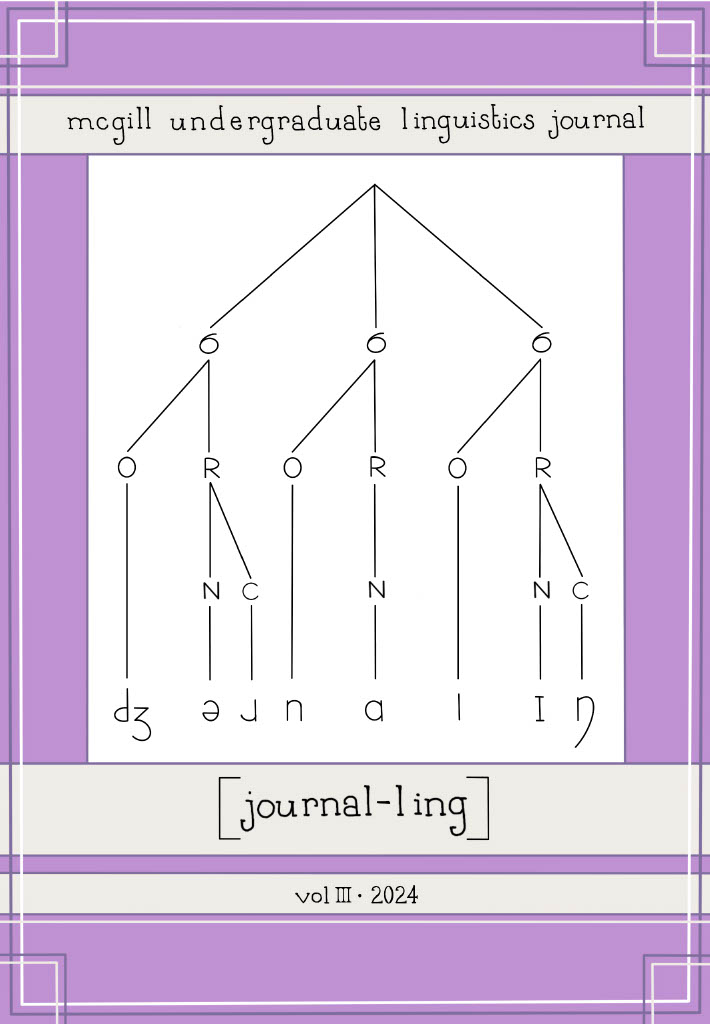Publié-e 2024-12-31
(c) Tous droits réservés Simone Brown, Rachel Mattie 2024

Cette œuvre est sous licence Creative Commons Attribution - Pas de Modification 4.0 International.
Résumé
German is a complex language with unique syntactic characteristics. In this paper, one of these unique features will be examined, namely, verbs that resist typical patterns of movement. These verbs, called immobile complex verbs, combine a prefix with a verb to communicate additional meaning. Although rules governing the German language require these verbs to move, they remain in their underlying position. This paper will provide a summary of current linguistic discussions surrounding immobile verb structure in German, exploring several key theorists who have attempted to discern what differentiates immobile complex verbs from separable and inseparable verbs within German. Ultimately, this paper will argue that Haider’s theories for complex and comparative immobile verbs are not successful in capturing the nature of this phenomenon. Vikner’s theory for complex immobile verbs, which argues for the existence of the IP, as well as Meinunger and Freitag’s theory for comparative immobile verbs, which capture the cross-linguistic applications of this verb immobility, provide more comprehensive theories of this (non) verb movement.

